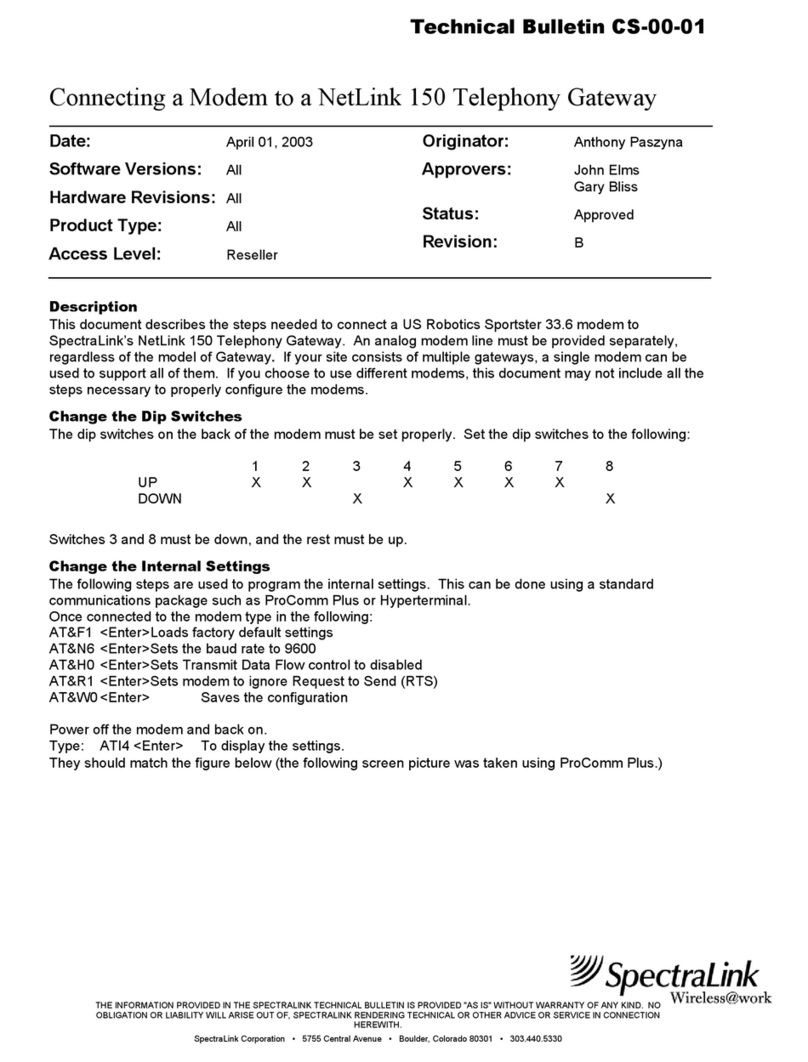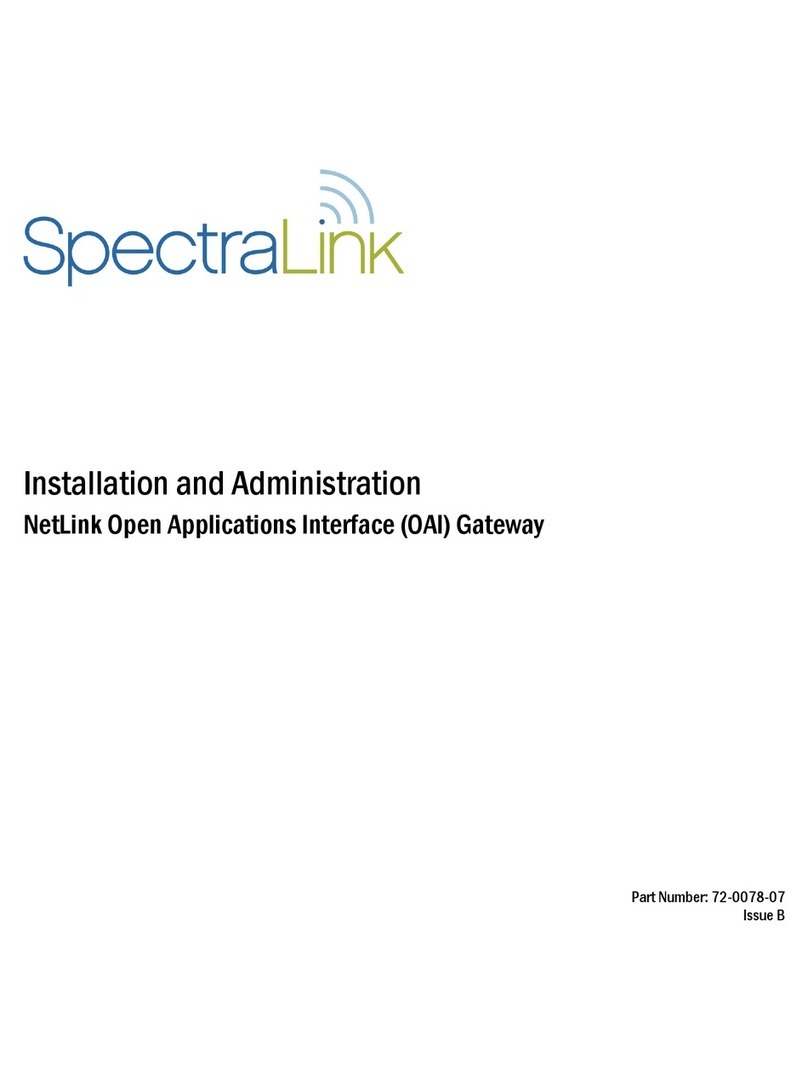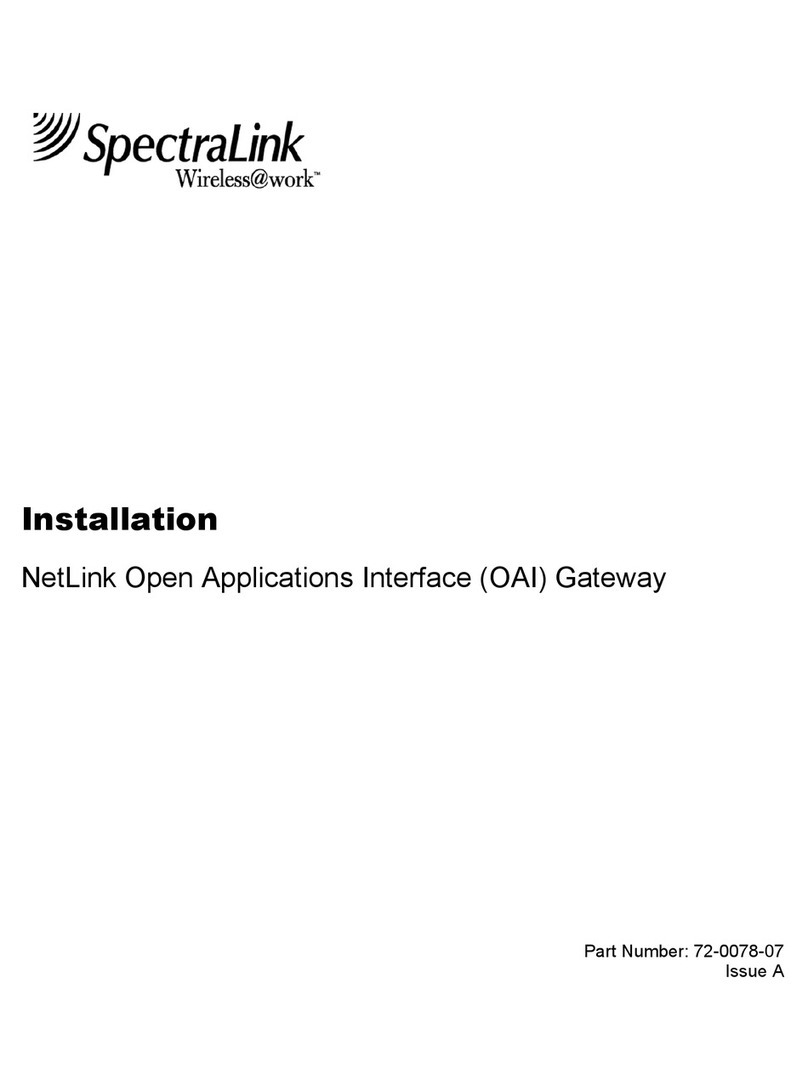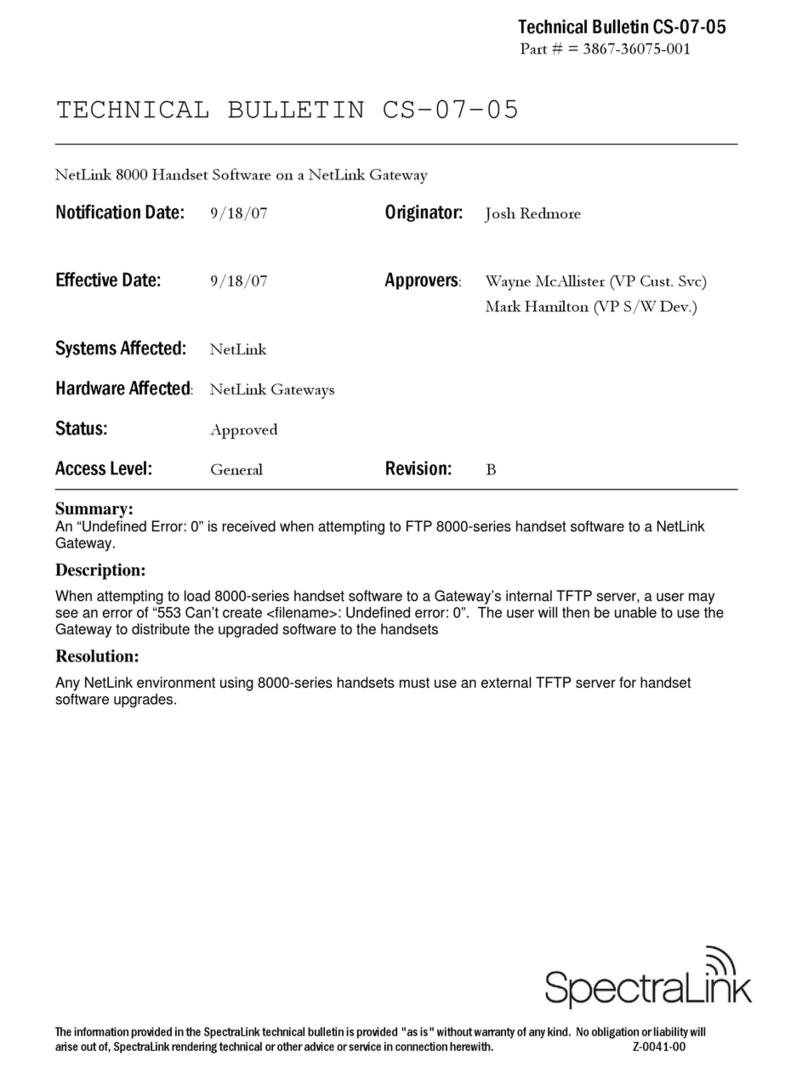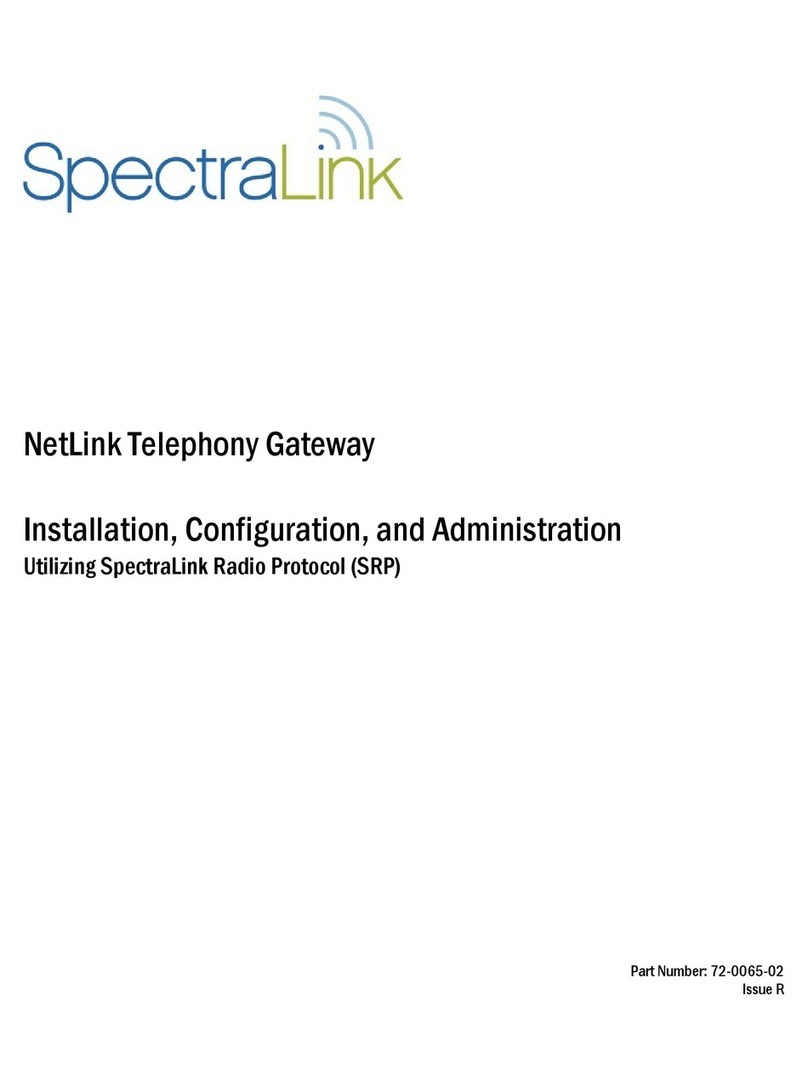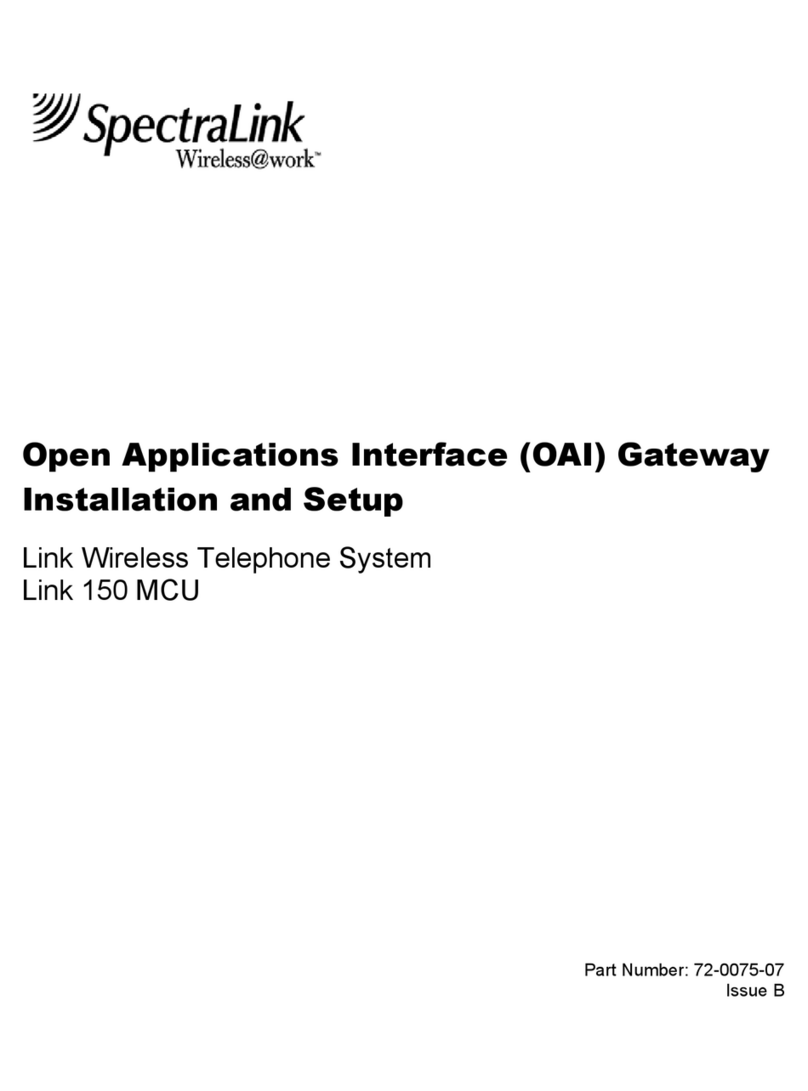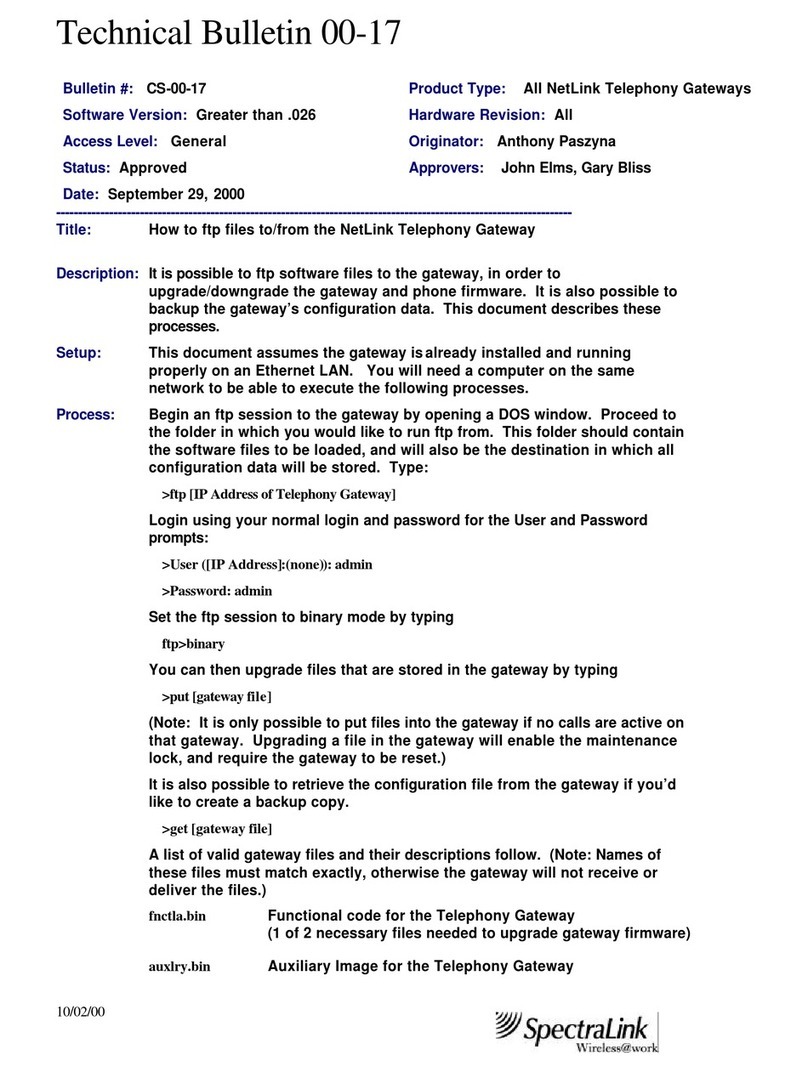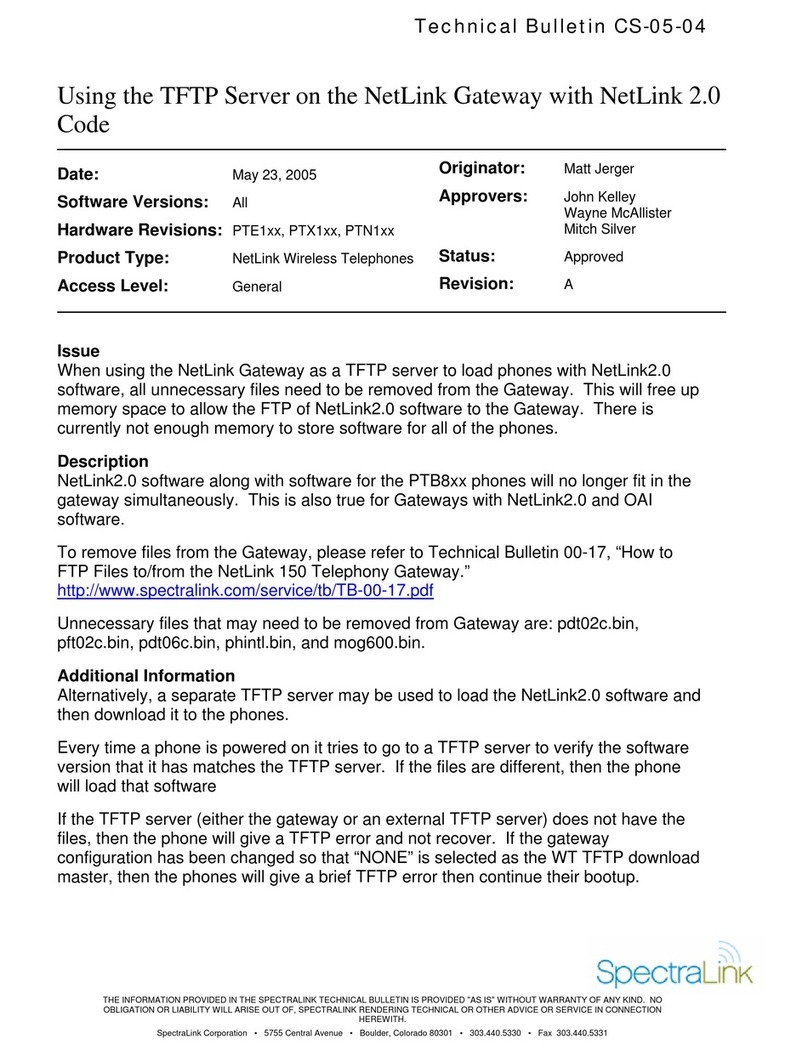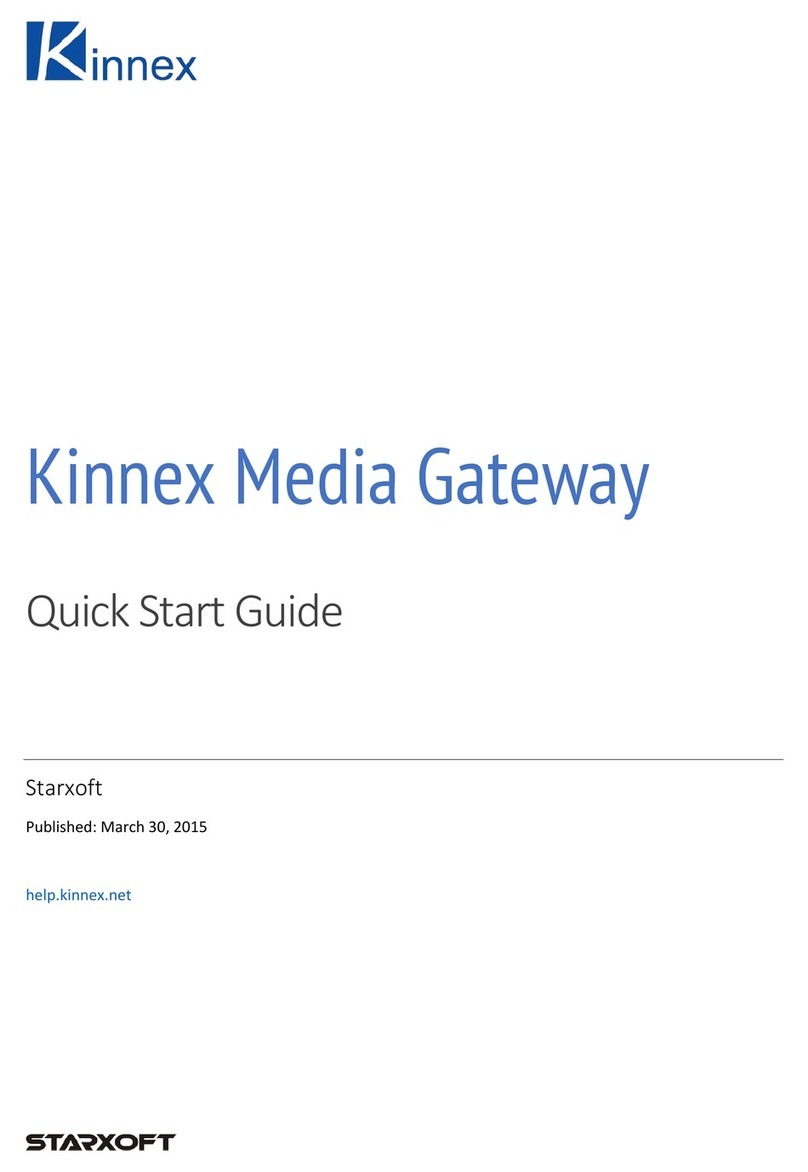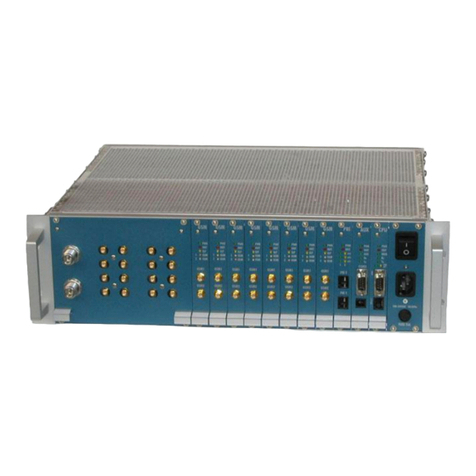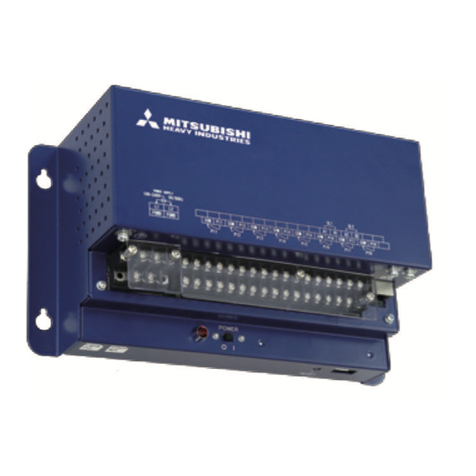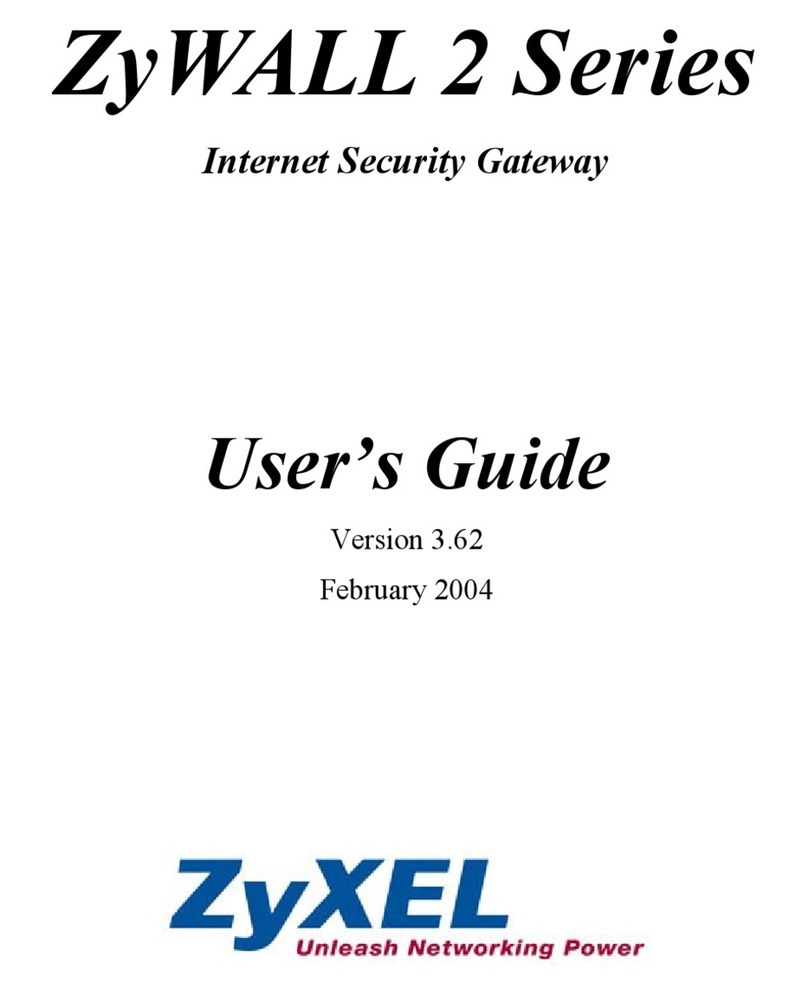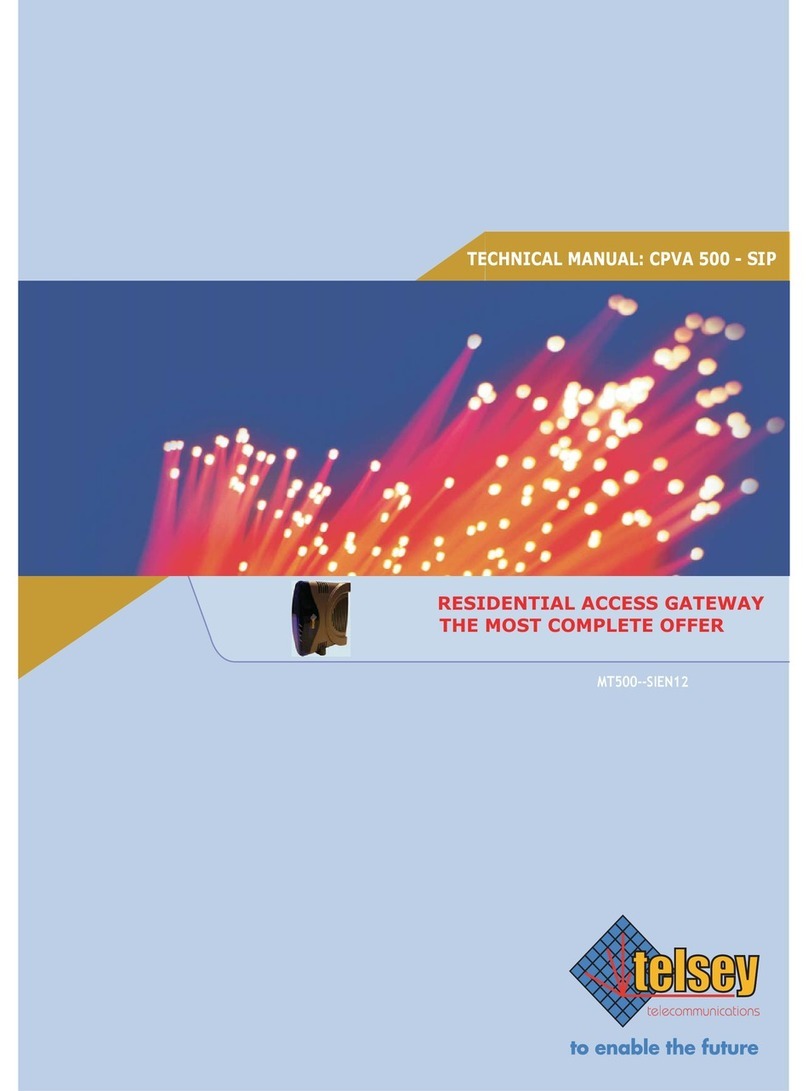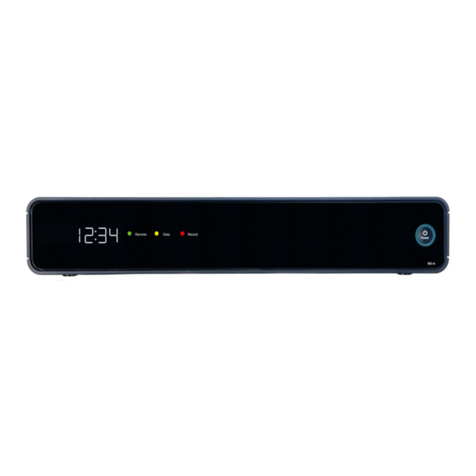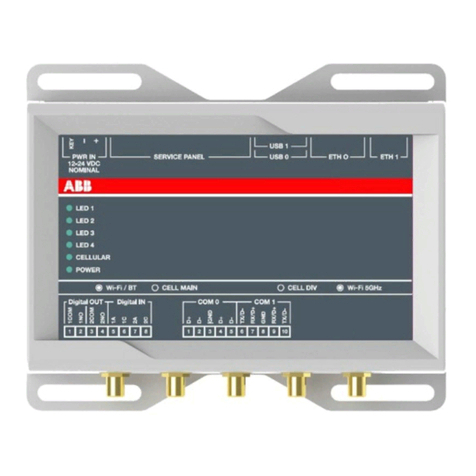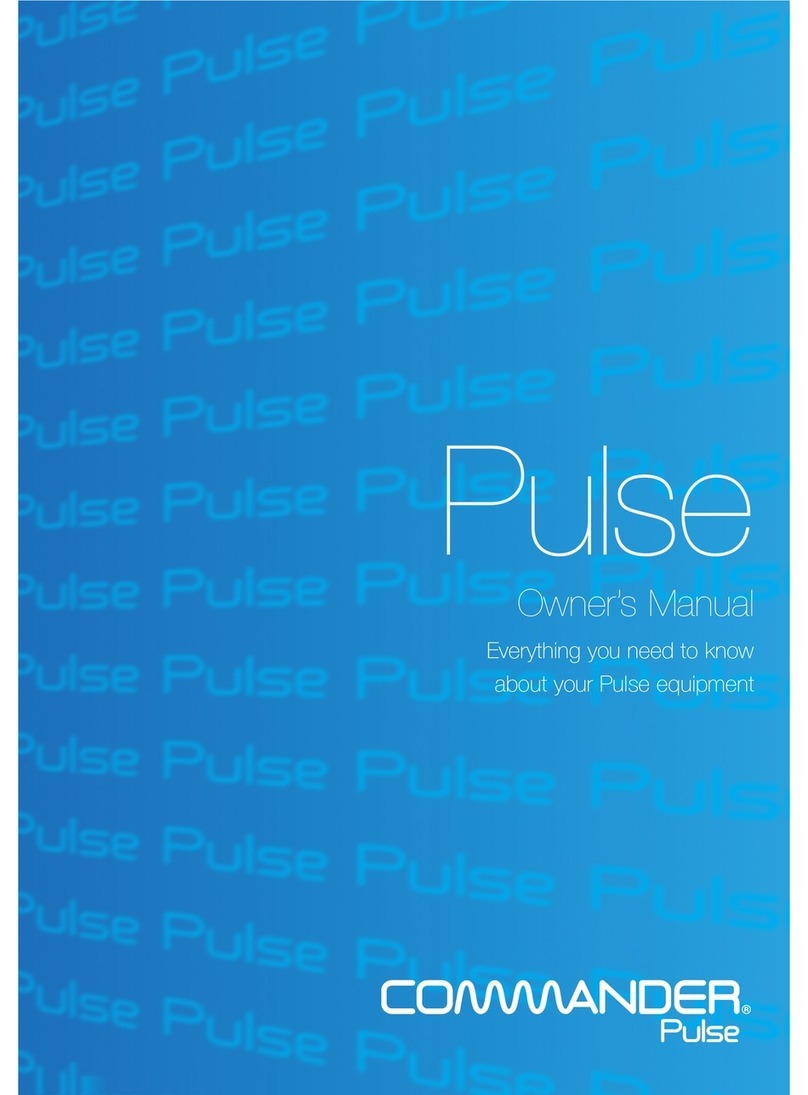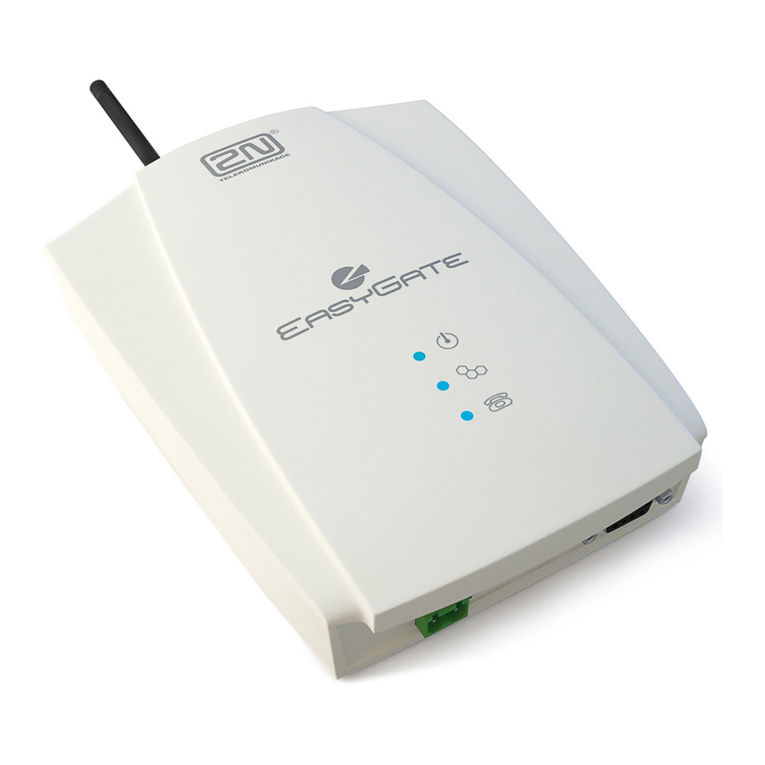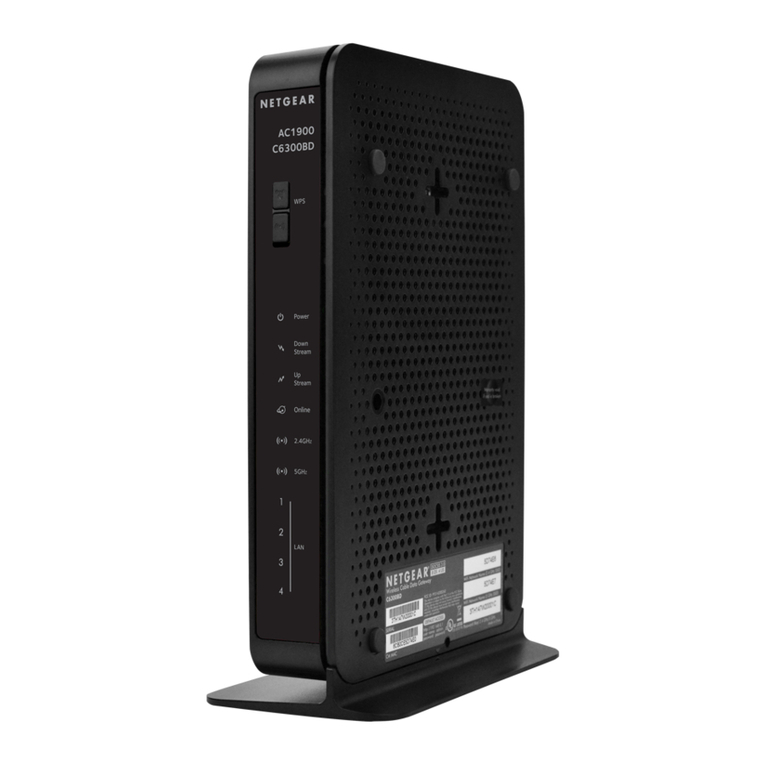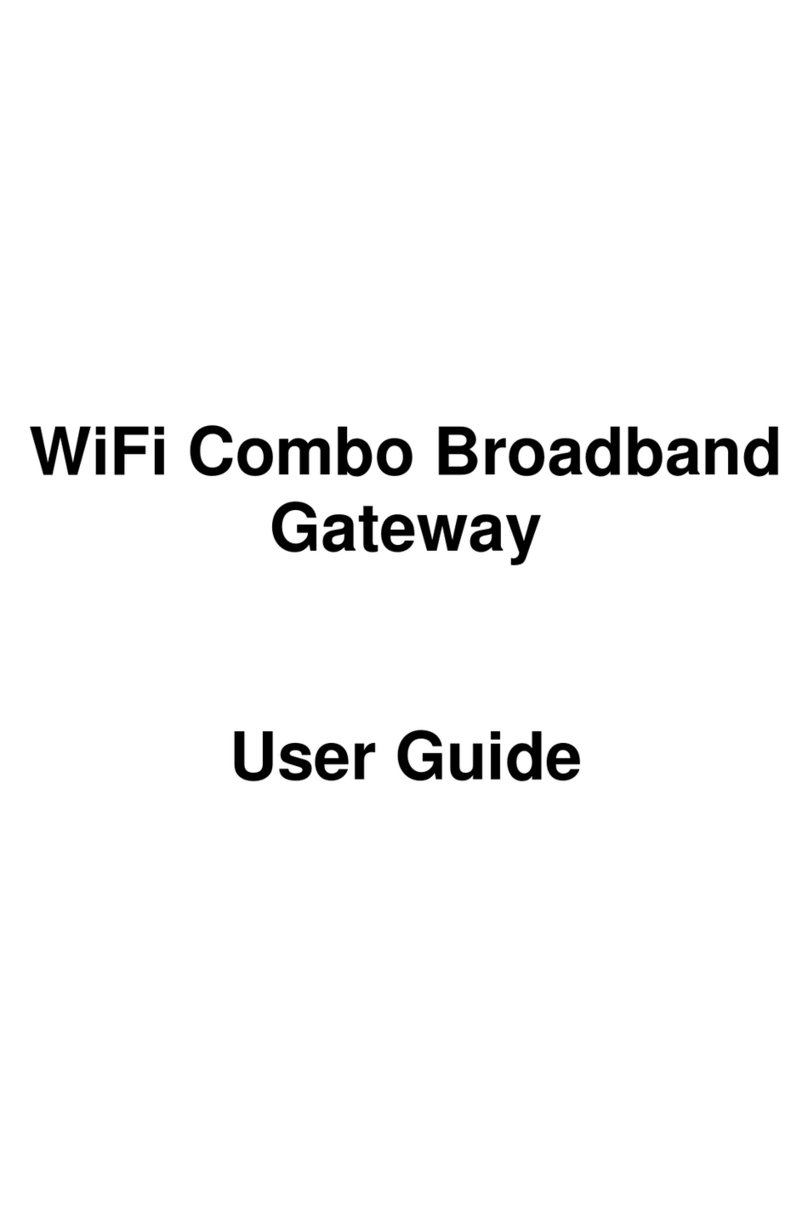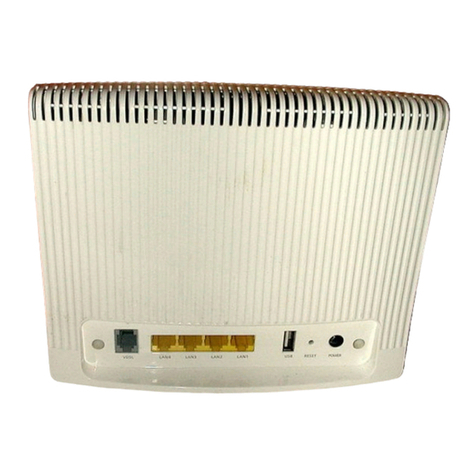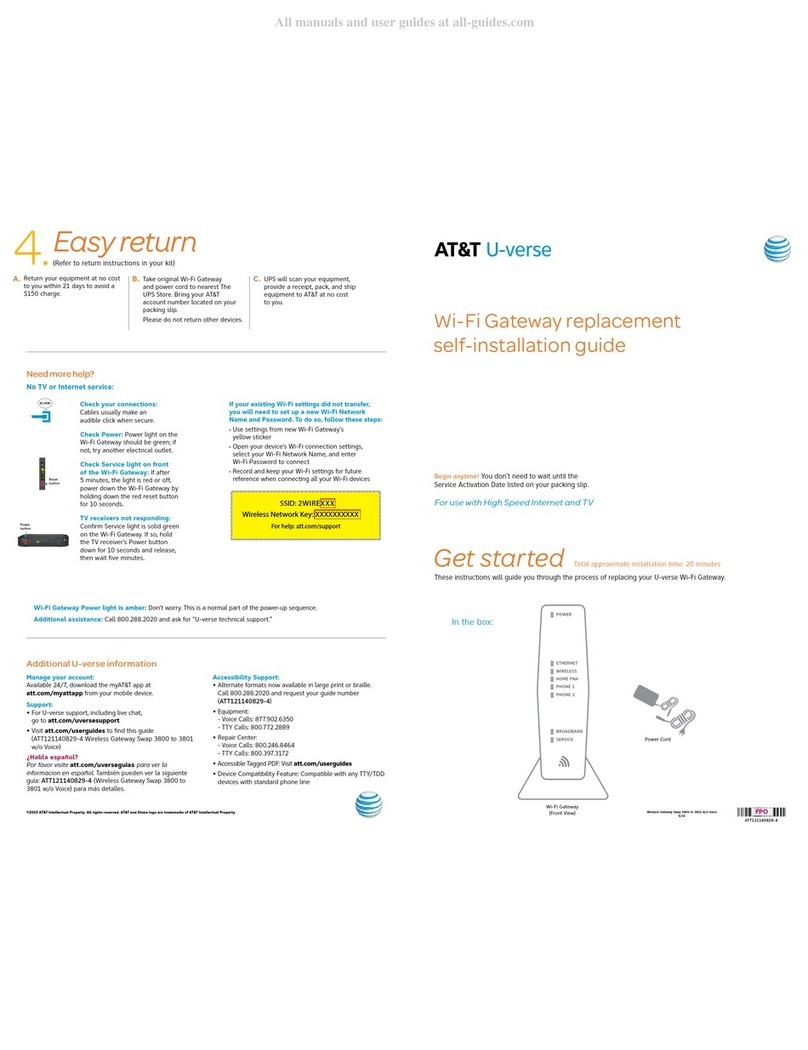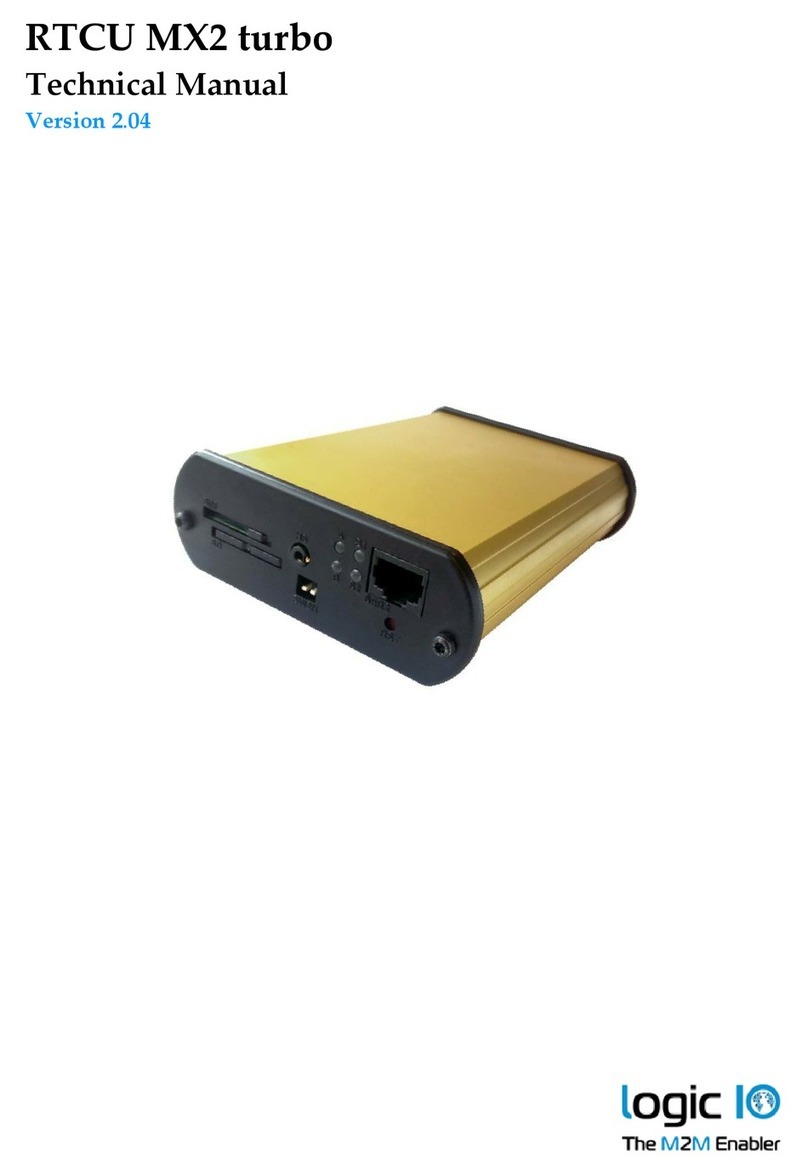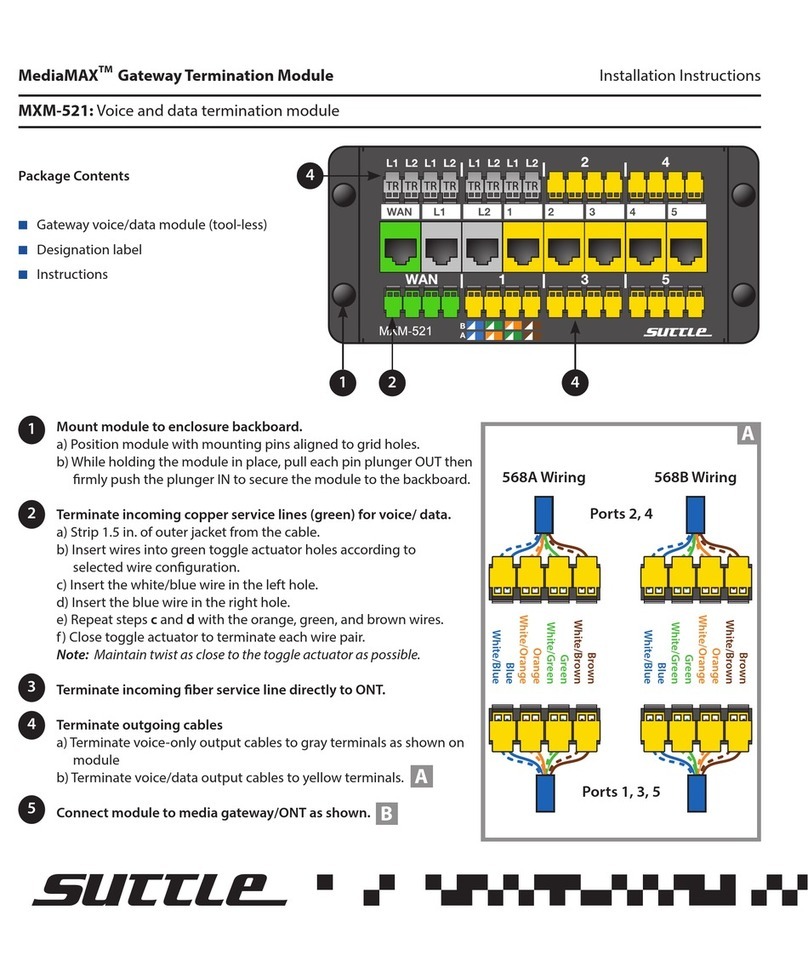
SpectraLink Corporation Installation—NetLink Telephony Gateway
NetLink SVP Server
Part Number: 72-0065-01-G.doc Page 2
NOTICE
SpectraLink Corporation has prepared this document for use by SpectraLink personnel and clients. The drawings and
specifications contained herein are the property of SpectraLink and shall be neither reproduced in whole or in part
without the prior written approval of SpectraLink, nor be implied to grant any license to make, use, or sell equipment
manufactured in accordance herewith.
SpectraLink reserves the right to make changes in specifications and other information contained in this document
without prior notice, and the reader should in all cases consult SpectraLink to determine whether any such changes
have been made.
The terms and conditions governing the sale of SpectraLink hardware products and the licensing of SpectraLink
software consist solely of those set forth in the written contracts between SpectraLink and its customers. No
representation or other affirmation of fact contained in this document including but not limited to statements regarding
capacity, response-time performance, suitability for use, or performance of products described herein shall be deemed
to be a warranty by SpectraLink for any purpose, or give rise to any liability of SpectraLink whatsoever.
In no event shall SpectraLink be liable for any incidental, indirect, special, or consequential damages whatsoever
(including but not limited to lost profits) arising out of or related to this document, or the information contained in it,
even if SpectraLink has been advised, knew, or should have known of the possibility of such damages.
Trademark Information
SpectraLink
LinkPlus
Link Wireless Telephone System
NetLink Telephony Gateway
NetLink Wireless Telephone
NetLink SVP Server
SpectraLink Voice Priority
ccLink Wireless Telephone System
NetLink e340 Wireless Telephone
NetLink i640 Wireless Telephone
are trademarks and registered trademarks of SpectraLink Corporation.
All other trademarks used herein are the property of their respective owners.
Copyright © 1998, 1999, 2000, 2001, 2002, 2003 SpectraLink Corporation. All rights reserved.
Information in this document is subject to change without notice and does not represent a commitment on the part of
SpectraLink Corporation. The software described in this document is furnished under a license and/or copyright and
may only be used with the terms of SpectraLink’s software license agreement as found in this manual or at
www.spectralink.com/software.htm. The software may be used only in accordance with the terms of the agreement. No
part of this manual, or the software described herein, may be reproduced or transmitted in any form or by any means,
electronic or mechanical, including photocopying and recording, for any purpose except for the sole intent to operate
the product or without the express written permission of SpectraLink Corporation.
SpectraLink Corporation
5755 Central Avenue
Boulder, CO 80301
Within the United States, dial
303.440.5330 or toll free
800.676.5465
Outside the U.S., dial
+1.303.440.5330
www.spectralink.com
